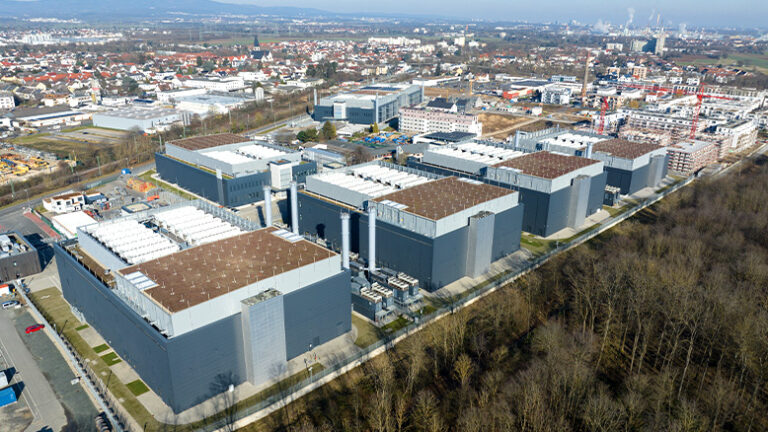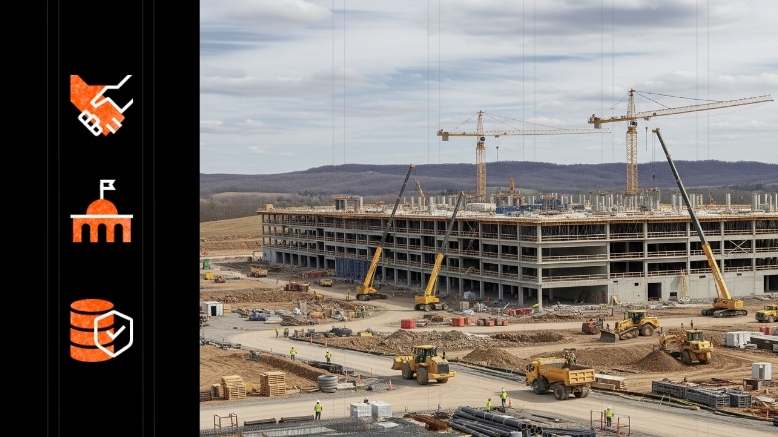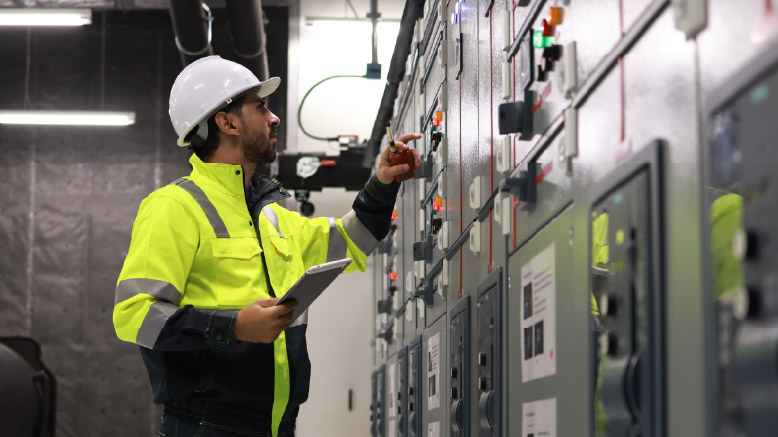— 7 min read
How Data Centers and Urban Communities Can Coexist
Last Updated Sep 23, 2025
Trevor Dielmann
Enterprise Solution Specialist, Data Centers
Trevor Dielmann brings a decade of experience in construction and project management to the table. His background began in general contracting, providing a solid foundation in the industry before transitioning to the semiconductor sector where he specialized in the construction of cutting-edge R&D labs specifically designed for the advancement of data center specific chipsets. Trevor’s unique blend of experiences provides a valuable perspective by fostering a deep understanding of client needs and project complexities.
Marlissa Collier
33 articles
Marlissa Collier is a journalist whose work focuses on the intersections of business, technology, policy and culture. Her work has been featured in digital and print formats with publications such as the Dallas Weekly, XO Necole, NBCU Comcast, the Dallas Nomad, CNBC, Word in Black and Dallas Free Press. Marlissa holds an undergraduate degree in Construction Engineering from California State University, Long Beach and an MBA from Southern Methodist University’s Cox School of Business.
Last Updated Sep 23, 2025

The rapid construction of data centers has become an undeniable hallmark of our increasingly digital world. These colossal structures have become essential for powering everything from streaming services to artificial intelligence, and are increasingly being built near or within urban communities.
However, their presence isn’t always welcomed, with new builds often sparking tension, fueled by public concerns about environmental impact, noise pollution and more. Addressing these concerns has become essential for creating a harmonious, long-term relationship between data centers and the communities they neighbor.
Table of contents
Understanding the Points of Tension
Historically, critical infrastructure like power plants and water treatment facilities haven't always been seen as friendly neighbors, primarily due to concerns over their environmental impact, noise pollution, and the perception of limited direct benefits to the immediate community.
Data centers now face similar scrutiny, amplified by their sheer scale and rapid growth. But a significant part of the challenge stems from a public perception often shaped by unknowns. Communities hear "data center" and immediately associate it with massive energy consumption and significant environmental footprints.
Key points of friction include:
Resource Consumption
The immense demand for electricity is a primary concern for data centers, but equally pressing is the consumption of water, particularly in regions like Texas or Arizona where water is already a finite resource. According to a report by the Department of Energy, data centers consumed about 4.4% of total U.S. electricity in 2023 and are expected to consume approximately 6.7 to 12% of total U.S. electricity by 2028.
Environmental Pollution
The reliance on large-scale diesel generators for backup power raises serious environmental worries, including potential leaks and air quality impacts. For example, there was public outcry over a proposal to store 30 million gallons of diesel on a Virginia data center site with environmental groups expressing concerns about air, water and light pollution.
Noise Pollution
Data centers create a constant, low hum from massive cooling systems, and the external fans that can be a relentless auditory nuisance for nearby residents.
Job Creation Disparity
While data center construction creates numerous temporary jobs during the build phase, the long-term operational workforce is remarkably small — often as few as 50 jobs for a million-square-foot facility. This limited ongoing job creation, especially when compared to other industries that could occupy valuable real estate, can leave communities feeling that the local impact disproportionately outweighs the long-term economic benefits.
Aesthetics
Historically, data centers have often been designed as utilitarian concrete boxes, lacking aesthetic appeal and clashing with community landscapes, further exacerbating their perceived negative impact.
Free AI in Construction Course with Hugh Seaton
Start learning today with industry expert Hugh Seaton and discover how AI can boost efficiency, reduce risk, and transform your projects.

Building Bridges: Proactive Approaches to Coexistence
Recognizing the potential for public backlash and project delays, data center developers and owners are increasingly adopting more integrated and positive approaches to community engagement. The core strategy hinges on transparency and proactive communication, which are key to building essential trust and mutual understanding.
Forward-thinking developers engage with local communities and governments from the very initial discovery phase of land acquisition. This early dialogue helps identify potential risks, address pushbacks and creates a willingness from the locale to work collaboratively. Openly discussing concerns and offering solutions before issues escalate has become a common and effective strategy.
To conquer the traditionally lacking aesthetics on data center builds, developers are now investing significant thought and resources into architectural design. The goal is to help data centers blend seamlessly with their surroundings and create more visually appealing structures that are aesthetically pleasing. This relatively low-cost effort, from an overall development perspective, goes a surprisingly long way in improving public perception.
Developers are now investing more thought and resources into making data centers aesthetically pleasing from the outside. They're moving beyond the look of a 'big concrete box' to designs that blend in with the surroundings or are visually appealing to the public driving by.
Trevor Dielmann
Enterprise Solution Specialist, Data Centers
Procore Technologies
Addressing noise pollution is also a top priority. Significant emphasis is now placed on developing and implementing quieter fan technologies within cooling systems, as well as specialized noise containment solutions like screening systems or acoustic panels, especially when facilities are near residential areas. Microsoft, for example, has implemented a number of noise mitigation strategies, including noise walls, buffers, mufflers and more.
Acknowledging the limited long-term employment opportunities many data center owners are proactively offering substantial community benefits. This can include investments in local infrastructure, such as enhancing broadband internet access for surrounding neighborhoods, or upgrading utility lines (e.g., moving overhead power lines underground for a cleaner, safer appearance).
Critically, many firms are forming STEM education partnerships with local schools and community colleges, helping to upskill local residents for future high-paying tech jobs that may emerge, even if not directly within the data center itself.
For large developments, data center companies are engaging with local governments and often receive tax incentives that come with a commitment to invest in the community, particularly through STEM education partnerships with high schools and local community colleges.
Trevor Dielmann
Enterprise Solution Specialist, Data Centers
Procore Technologies
Innovation in Urban Integration
The push for data centers to be closer to densely populated areas, where power infrastructure already exists, is also driving innovation. Beyond the massive "hyperscale" developments that grab headlines, smaller, more specialized data centers are emerging.
"Edge data centers," which are smaller and less visually obtrusive data centers (e.g., 40-50 megawatts), are often centrally located in urban environments. They blend into existing industrial or office parks, serving as the "final step" between end-users and the broader cloud, enabling faster data access with less infrastructure burden on remote communities.
"We have real data with integrity to base our decisions on."
Learn how Vantage Data Centers created a single source of truth to improve data analytics, financial performance and communication across five continents.

Some developers are actively working with utility providers to identify and utilize "stranded power" — surplus electricity within urban substations that would otherwise go unused. Companies like Flexnode are exploring models to repurpose parking lots or underutilized urban plots for compact data centers that draw from this existing, underutilized power grid. These projects often bring benefits like faster fiber internet to immediate neighbors and revitalize neglected urban spaces.
In cooler climates, an exciting innovation is the capture and repurposing of excess heat generated by data centers. For example, a Microsoft data center in Denmark has implemented a program to capture surplus heat and use it to warm thousands of nearby homes and businesses. This "reheat" technology not only makes the data center more efficient but also reduces heating costs for the community, creating a truly symbiotic relationship. While specific to colder regions, it exemplifies the out-of-the-box thinking needed for mutual benefit.
Enabling Harmony: The Role of Integrated Project Management
Achieving this level of harmonious coexistence necessitates robust project management and transparent communication. Comprehensive digital platforms play a pivotal role in enabling these "good neighbor" strategies. These solutions provide the framework for:
Acting as a single source of truth, project management platforms facilitate seamless communication between all project stakeholders — the data center owner, general contractor, subcontractors and, importantly, local government and community representatives. This way, everyone is on the same page regarding project impacts, mitigation strategies and community benefits.
Construction management tools allow for real-time tracking of project progress, environmental impact data and resource consumption (like water and energy). This transparency can be shared with relevant community stakeholders, building trust by demonstrating adherence to commitments and proactive management of potential issues.
By centralizing project data like detailed construction schedules, equipment usage and safety logs, these tools enable teams to proactively identify and mitigate risks that could impact the community, such as potential noise spikes during specific construction phases or concerns about traffic disruption.
Platforms can even help manage and report on community investment initiatives, tracking expenditures, progress on STEM programs or infrastructure upgrades, providing verifiable data to demonstrate the data center's positive contributions.
By optimizing internal processes, reducing rework and improving efficiency, these digital tools help keep projects on time and within budget, minimizing the period of disruption for local residents and allowing the data center to become an integrated part of the community sooner.
The challenges of integrating data centers into urban environments are real, but so are the emerging solutions and the digital tools to implement them. Data centers can become good neighbors by promoting transparency, strategic community investment and innovative design that extends beyond the fence line — all facilitated by modern project management practices— and contribute positively to the communities they serve and laying the digital foundation for a smarter future.
Was this article helpful?
Thank you for your submission.
0%
0%
You voted that this article was . Was this a mistake? If so, change your vote
Scroll less, learn more about construction.
Subscribe to The Blueprint, Procore’s construction newsletter, to get content from industry experts delivered straight to your inbox.
By clicking this button, you agree to our Privacy Notice and Terms of Service.
Thank you!
You’re signed up to receive The Blueprint newsletter from Procore. You can unsubscribe at any time.
Categories:
Written by
Trevor Dielmann
Enterprise Solution Specialist, Data Centers | Procore Technologies
Trevor Dielmann brings a decade of experience in construction and project management to the table. His background began in general contracting, providing a solid foundation in the industry before transitioning to the semiconductor sector where he specialized in the construction of cutting-edge R&D labs specifically designed for the advancement of data center specific chipsets. Trevor’s unique blend of experiences provides a valuable perspective by fostering a deep understanding of client needs and project complexities.
View profileMarlissa Collier
33 articles
Marlissa Collier is a journalist whose work focuses on the intersections of business, technology, policy and culture. Her work has been featured in digital and print formats with publications such as the Dallas Weekly, XO Necole, NBCU Comcast, the Dallas Nomad, CNBC, Word in Black and Dallas Free Press. Marlissa holds an undergraduate degree in Construction Engineering from California State University, Long Beach and an MBA from Southern Methodist University’s Cox School of Business.
View profileExplore more helpful resources

Building Intelligence: How AI & Data Are Rewiring Construction for the Digital Age
As data center construction surges to meet the demands of AI, cloud computing, weekend streaming binges and real-time digital services, the pressure being put on builders by owners has reached...

Power, Politics & Permits: The External Forces Shaping Data Center Development
As the need for digital infrastructure accelerates, data centers have become essential to powering the world’s digital economy. Yet, behind every hyperscale facility is a complex web of external forces...

The New Frontier: How Data Centers Are Pushing the Limits of Construction
The digital world never sleeps — and as such, neither can the infrastructure powering it. As demand for cloud services, artificial intelligence and streaming data continues to surge, data centers...

The Top 5 MEP Challenges of Data Centers
Data centers are unique builds that come with unique challenges. MEP contractors stepping up to build data centers are sure to encounter the complexity of systems and the demands of scalability,...
Free Tools
Calculators
Use our calculators to estimate the cost of construction materials for your next project.
Templates
Find a template to help you with your construction project tasks.
Material Price Tracker
Get the latest U.S. retail prices and view historical trends for common building materials.
Glossary
Explore key terms and phrases used in the industry.
